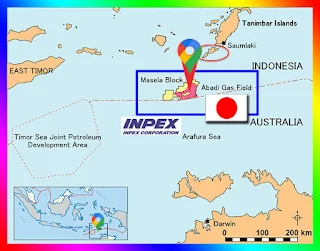It is hoped that upstream oil and gas investment in Indonesia will revive following the increase in oil prices in the last few days. The increase in world oil prices has an impact on the increase in Indonesian oil prices.
Based on Bloomberg data on Thursday's trading (20 / October), the price of Brent oil was US $ 52.57 per barrel and WTI US $ 51.41 per barrel. This price is the highest in the last year. The increase in price was triggered by the decreasing supply factor in the United States. On February 11, 2016, WTI reached its lowest price in the past year, namely 26.21 US dollars per barrel.
The lowest price for Brent in the past year on January 20, 2016, was 52.88 US dollars per barrel. Director-General of Oil and Gas at the Ministry of Energy and Mineral Resources (ESDM) I Gusti Nyoman Wiratmaja said that the increase in world oil prices has an impact on Indonesia's crude price / ICP.
This condition is expected to stimulate upstream oil and gas investment in Indonesia. If the world oil price rises, practically the ICP will also increase. This means that state revenues will also increase. In addition, I hope this increase will stimulate upstream investment in Indonesia. This year, the government and the House of Representatives agreed to set the ICP at the US $ 40 per barrel. In the preparation of the 2017 State Budget (APBN), the ICP benchmark was raised to 45 US dollars per barrel.
Based on data from the Ministry of Energy and Mineral Resources, the ICP in September 2016 amounted to 42.17 US dollars per barrel, up from the August 2016 price of 41.11 US dollars per barrel. The lowest ICP this year was 2749 US dollars per barrel in January.
"If the trend of world oil prices continues to rise, it will be in accordance with our projection in the 2017 State Budget, which is around the US $ 45 per barrel for the ICP".
F or PT Pertamina (Persero), which everyday imports around 430,000 barrels of crude oil, this price increase does not really affect the company's finances. Moreover, it is difficult to predict the continuation of this rising price trend.
"The increase in oil prices is not too significant with the budget for imports. Pertamina imports oil with a futures contract system, at least for up to six months, ”said Pertamina Vice President for Corporate Communication Wianda Pusponegoro.
At a time when the world oil price was around 100 US dollars per barrel, the need for foreign exchange to import crude oil and Pertamina's fuel oil was 150 million US dollars to 200 million US dollars per day. The fall in oil prices since late 2014 reduced the need for US dollars to import oil by more than 50 percent. State revenue An increase or decrease in ICP has a direct effect on state revenue. In 2015, with an average ICP throughout the year of US $ 48 per barrel, the contribution of oil and gas revenues was around Rp. 136 trillion.
This figure is much lower than in 2014, which increased revenues of IDR 320 trillion with an average ICP of 96 US dollars per barrel. The drastic drop in oil prices has also made an upstream investment in the oil and gas sector in Indonesia less attractive. In 2015, upstream oil and gas investment spending was 15.34 billion US dollars, lower than in 2014 which reached 20.36 billion US dollars. Meanwhile, spending in the first semester of 2016 was the US $ 5.56 billion.
Kompas, Page-1, Friday, Oct 21, 2016
















